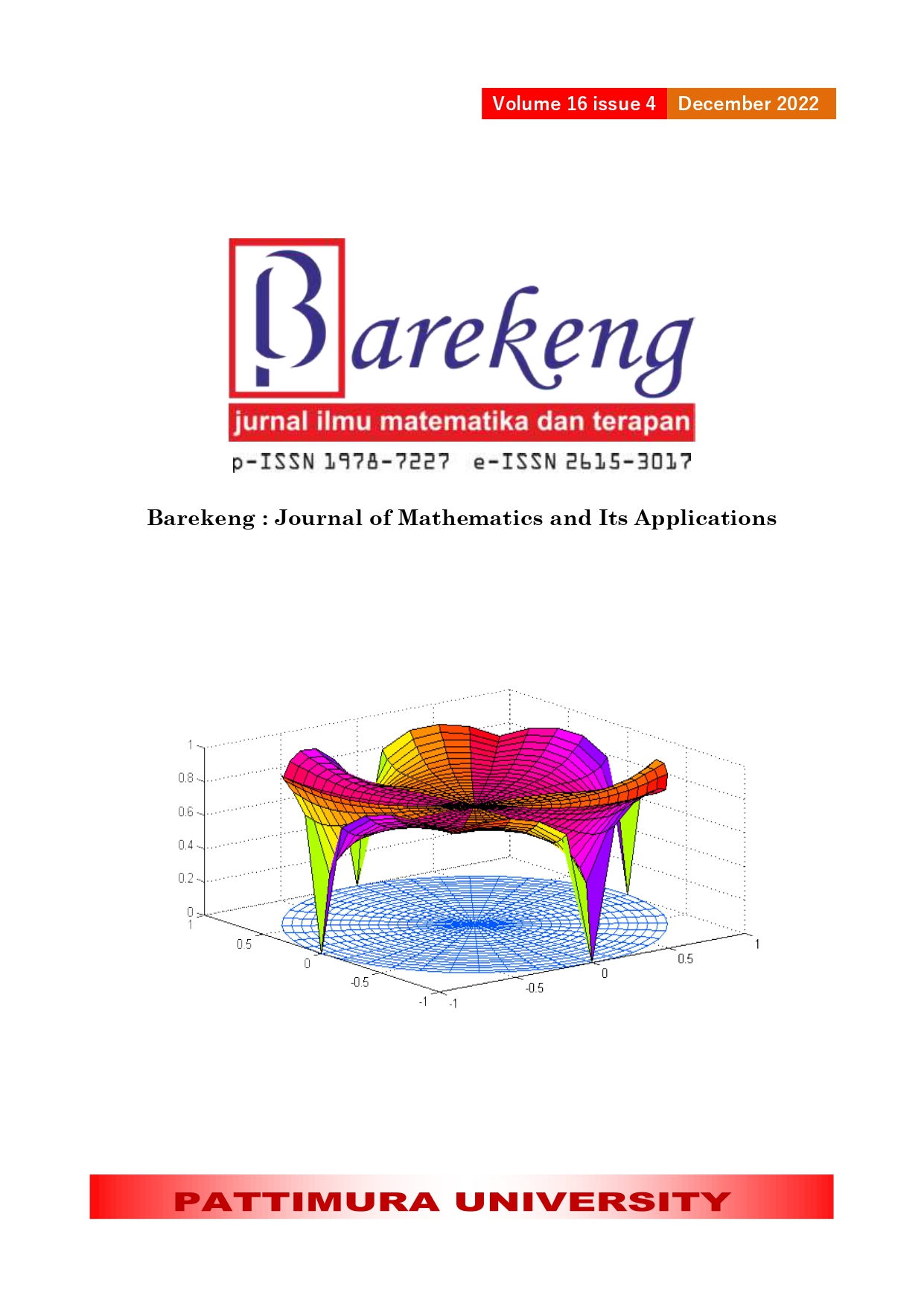COMPARISON OF RANDOM FOREST AND NAÏVE BAYES METHODS FOR CLASSIFYING AND FORECASTING SOIL TEXTURE IN THE AREA AROUND DAS KALIKONTO, EAST JAVA
Abstract
Soil texture is used to determine airflow, heat, instability, water holding capacity, and the shape and structure of the soil structure. Soil texture as an important attribute that determines the direction of soil management must be modeled accurately. However, soil texture is a soil attribute that is quite difficult to model. It is a compositional data set that describes the particle size of the soil mineral fraction (sand, silt, and clay). The methods used to classification and predict soil texture with machine learning algorithms are Random Forest (RF) and Naïve Bayes (NB). The purpose of this study was to classify the distribution of soil texture using the Random Forest and Naïve Bayes methods to obtain the most accurate grouping results. This research was conducted in the area around Kalikonto River Basin, East Java Province. The performance-based tests show that the RF algorithm provides higher accuracy in predicting soil texture based on the Digital Elevation Model (DEM). The results of RF’s performance testing on training data and testing data gave an accuracy value of 92.55% and 87.5%. Classification using the Naïve Bayes method produces an accuracy value of 89.98% on testing data and 80.65% accuracy on training data.
Downloads
References
L. Advinda, Dasar–dasar fisiologi tumbuhan. Deepublish, 2018.
W. Wu, A.-D. Li, X.-H. He, R. Ma, H.-B. Liu, and J.-K. Lv, “A comparison of support vector machines, artificial neural network and classification tree for identifying soil texture classes in southwest China,” Comput. Electron. Agric., vol. 144, pp. 86–93, 2018, doi: https://doi.org/10.1016/j.compag.2017.11.037.
K. J. Beek, Land evaluation for agricultural development: some explorations of land-use systems analysis with particular reference to Latin America. Wageningen University and Research, 1978.
G. Stoops, Guidelines for analysis and description of soil and regolith thin sections, vol. 184. John Wiley & Sons, 2021.
A. B. McBratney, B. Minasny, and U. Stockmann, Pedometrics. Springer, 2018.
K. Taunk, S. De, S. Verma, and A. Swetapadma, “A brief review of nearest neighbor algorithm for learning and classification,” in 2019 International Conference on Intelligent Computing and Control Systems (ICCS), 2019, pp. 1255–1260.
I. M. B. Adnyana, “Prediksi Lama Studi Mahasiswa Dengan Metode Random Forest (Studi Kasus: STIKOM Bali),” CSRID (Computer Sci. Res. Its Dev. Journal), vol. 8, no. 3, pp. 201–208, 2016.
H. Susanto and S. Sudiyatno, “Data mining untuk memprediksi prestasi siswa berdasarkan sosial ekonomi, motivasi, kedisiplinan dan prestasi masa lalu,” J. Pendidik. Vokasi, vol. 4, no. 2, pp. 222–231, 2014, doi: 10.21831/jpv.v4i2.2547.
N. Normah, “Naïve Bayes algorithm for sentiment analysis windows phone store application reviews,” Sink. J. dan Penelit. Tek. Inform., vol. 3, no. 2, pp. 13–19, 2019.
T. Imandasari, E. Irawan, A. P. Windarto, and A. Wanto, “Algoritma Naive Bayes Dalam Klasifikasi Lokasi Pembangunan Sumber Air,” Pros. Semin. Nas. Ris. Inf. Sci., vol. 1, no. September, p. 750, 2019, doi: 10.30645/senaris.v1i0.81.
D. R. Cutler et al., “RANDOM FORESTS FOR CLASSIFICATION IN ECOLOGY,” Ecology, vol. 88, no. 11, pp. 2783–2792, Nov. 2007, doi: https://doi.org/10.1890/07-0539.1.
V. Y. Kullarni and P. K. Sinha, “Random Forest Classifier: A Survey and Future Research Directions,” Int. J. Adv. Comput., vol. 36, no. 1, pp. 1144–1156, 2013.
S. Hane and M. Angergård, “Do people actually listen to ads in podcasts?: A study about how machine learning can be used to gain insight in listening behaviour.” 2019.
G. Biau, “Analysis of a random forests model,” J. Mach. Learn. Res., vol. 13, no. 1, pp. 1063–1095, 2012.
L. Breiman, “Random forests,” Mach. Learn., vol. 45, no. 1, pp. 5–32, 2001.
L. Breiman and A. Cutler, “Manual for Setting Up,” Using, Underst. Random For., vol. 4, 2003.
M. S. Alam and S. T. Vuong, “Random forest classification for detecting android malware,” in 2013 IEEE international conference on green computing and communications and IEEE Internet of Things and IEEE cyber, physical and social computing, 2013, pp. 663–669.
J. Zhang, M. Zulkernine, and A. Haque, “Random-forests-based network intrusion detection systems,” IEEE Trans. Syst. Man, Cybern. Part C (Applications Rev., vol. 38, no. 5, pp. 649–659, 2008.
M. Dhawangkhara and E. Riksakomara, “Prediksi Intensitas Hujan Kota Surabaya dengan Matlab menggunakan Teknik Random Forest dan CART (Studi Kasus Kota Surabaya),” J. Tek. ITS, vol. 6, no. 1, 2017, doi: 10.12962/j23373539.v6i1.21120.
Copyright (c) 2022 Henny Pramoedyo, Danang Ariyanto, Novi Nur Aini

This work is licensed under a Creative Commons Attribution-ShareAlike 4.0 International License.
Authors who publish with this Journal agree to the following terms:
- Author retain copyright and grant the journal right of first publication with the work simultaneously licensed under a creative commons attribution license that allow others to share the work within an acknowledgement of the work’s authorship and initial publication of this journal.
- Authors are able to enter into separate, additional contractual arrangement for the non-exclusive distribution of the journal’s published version of the work (e.g. acknowledgement of its initial publication in this journal).
- Authors are permitted and encouraged to post their work online (e.g. in institutional repositories or on their websites) prior to and during the submission process, as it can lead to productive exchanges, as well as earlier and greater citation of published works.






1.gif)



